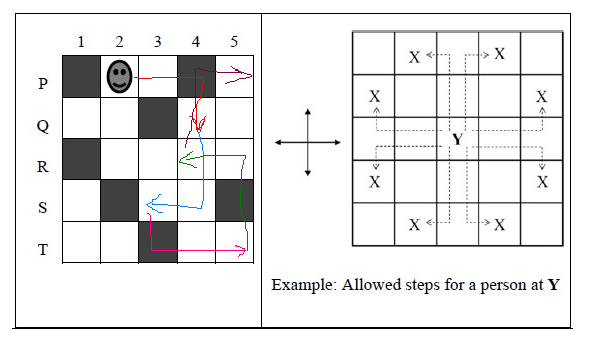Using the above information given in the question, we can move a person from $\text{P2 to P5.}$

A person can move from $\text{P2 to P5}$ in the following way (minimum number of steps):
- ${\color{Blue}{\text{P2} \overset{1}{\longrightarrow} \text{Q4} \overset{2}{\longrightarrow} \text{S3} \overset{3}{\longrightarrow} \text{Q2} \overset{4}{\longrightarrow} \text{R4} \overset{5}{\longrightarrow} \text{P5}}}$
Another way is also possible, with the minimum number of steps.

A person can move from $\text{P2 to P5}$ in the following way (minimum number of steps):
- ${\color{Purple}{\text{P2} \overset{1}{\longrightarrow} \text{Q4} \overset{2}{\longrightarrow} \text{S3} \overset{3}{\longrightarrow} \text{T5} \overset{4}{\longrightarrow} \text{R4} \overset{5}{\longrightarrow} \text{P5}}}$
$\therefore$ The minimum number of steps required (for a person) to go from $\text{P2 to P5}$ is $5.$
Correct Answer $:\text{B}$